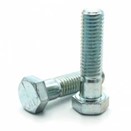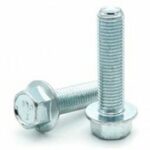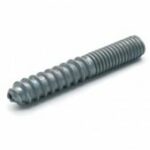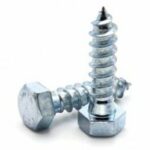Hex bolts, also known as hexagon bolts or machine bolts, are a type of fastener with a hexagonal head and a threaded shaft. They are designed to be used with a nut for fastening two or more parts together. The hexagonal shape of the head allows for easy tightening and loosening using a wrench or a socket tool.
Here are some key characteristics and features of hex bolts:
- Head Type: The most distinctive feature of hex bolts is their hexagonal (six-sided) head. This design provides a flat surface that can be gripped securely with a wrench, making them easy to install and remove.
- Threaded Shaft: Hex bolts have a threaded shaft that extends from the head. The length of the threaded portion can vary based on the specific application and the thickness of the materials being joined.
- Materials: Hex bolts are available in various materials, including steel, stainless steel, brass, and other alloys. The choice of material depends on factors such as strength requirements, corrosion resistance, and the environment in which they will be used.
- Thread Size and Pitch: Hex bolts come in a range of sizes, and the thread size and pitch (distance between threads) are important specifications to consider when selecting the appropriate bolt for a particular application.
- Grade: Hex bolts are often graded based on their tensile strength. Common grades include Grade 2, Grade 5, and Grade 8, with Grade 8 bolts having the highest tensile strength. The grade is usually indicated by markings on the bolt head.
- Uses: Hex bolts are used in a wide variety of applications, from construction and automotive to machinery and equipment assembly. They are commonly used in combination with nuts and washers to create strong and secure connections.
It’s important to choose the right type, size, and material of hex bolt based on the specific requirements of your project or application. Additionally, proper torque specifications and tightening procedures should be followed to ensure that the bolts are installed securely.





